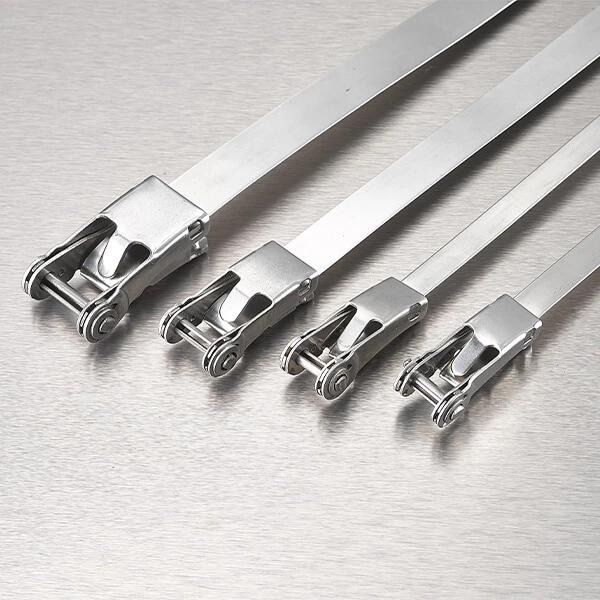Specification For Laying Process Of Stainless Steel Cable Ties For Marine Cables
Stainless Steel Cable Tie is generally used in ship electrical installation projects. Due to the particularity of its use site, it must be used strictly in accordance with the requirements specified in the design drawings. Today we will briefly introduce the corresponding laying process, hoping to help you use the cable tie.
1. Preparation before laying
(1) Before laying, there should be corresponding construction drawings and technical documents, usually requiring electrical equipment layout drawings, comprehensive conductive system diagrams and other materials. Do not blindly rely on past experience to lay.
(2) Construction personnel should be very familiar with the process requirements and construction methods of cable ties.
(3) Prepare all the tools and materials needed for laying, such as mounting parts, support parts, etc.
(4) After all materials and tools are prepared, it is necessary to open holes in the hull components and decks.
2. Requirements for construction workers
Construction workers should receive professional skills and safety knowledge training before they officially take up their posts. They should pass the assessment after the training. If they fail the assessment, it means that they do not have a thorough understanding of the process and use of cable tie laying and need to relearn.
3. Laying process requirements
(1) In order to facilitate future inspection and maintenance, the laid lines should use straight lines as much as possible. When laying the main lines, it should be ensured that the closing plates on the laying paths can be opened normally. At the same time, it is necessary to make good markings. The markings should be durable and clear. Open line laying is generally used in cold storage rooms and boiler rooms, and concealed line laying should be selected for other parts.
(2) When designing construction drawings, avoid laying lines in cargo holds, decks and storage rooms, because these places have strong mobility. If the lines are laid, if there are problems with the lines during use, it will cause trouble for the lines of the entire ship.
(3) When laying, you should pay attention to avoid places where moisture is easy to condense, and also avoid places with more heat sources. For example, the laying area is prone to oil and water immersion, and certain protective measures should be taken for exposed lines.
In addition, when laying cable ties, lines with different use environments cannot be laid together, such as signal cable ties and power cable ties cannot be laid together.
What types of stainless steel cable ties are there for marine cables? What are the characteristics of each type? Let's learn about it below.
1. G-type cable tie. The shape advantage of this type of cable tie is similar to the letter G. Its design is very user-friendly, so it is deeply loved by people in many places. Its main feature is that there is no sharp part, and there is a more user-friendly design at the end, so it will not hurt the user's fingers.
2. Ultra-wide cable tie. From the name, we can know that the characteristic of this type of cable tie is that the width is much wider than the ordinary cable tie. Therefore, it has a larger bearing capacity and is suitable for bundling large-sized cables.
3. GVO type fireproof cable tie. Its characteristics are relatively stable performance, fireproof performance, and can be used to tie flammable items.
4. Retractable cable tie. This type of tie is relatively flexible and can be tightened and loosened many times during use, with a high reuse rate.
This is the content of marine cable stainless steel tie. There are many manufacturers selling this product on the market. When buying, you must pay attention to the quality and choose the tie produced by regular manufacturers.



